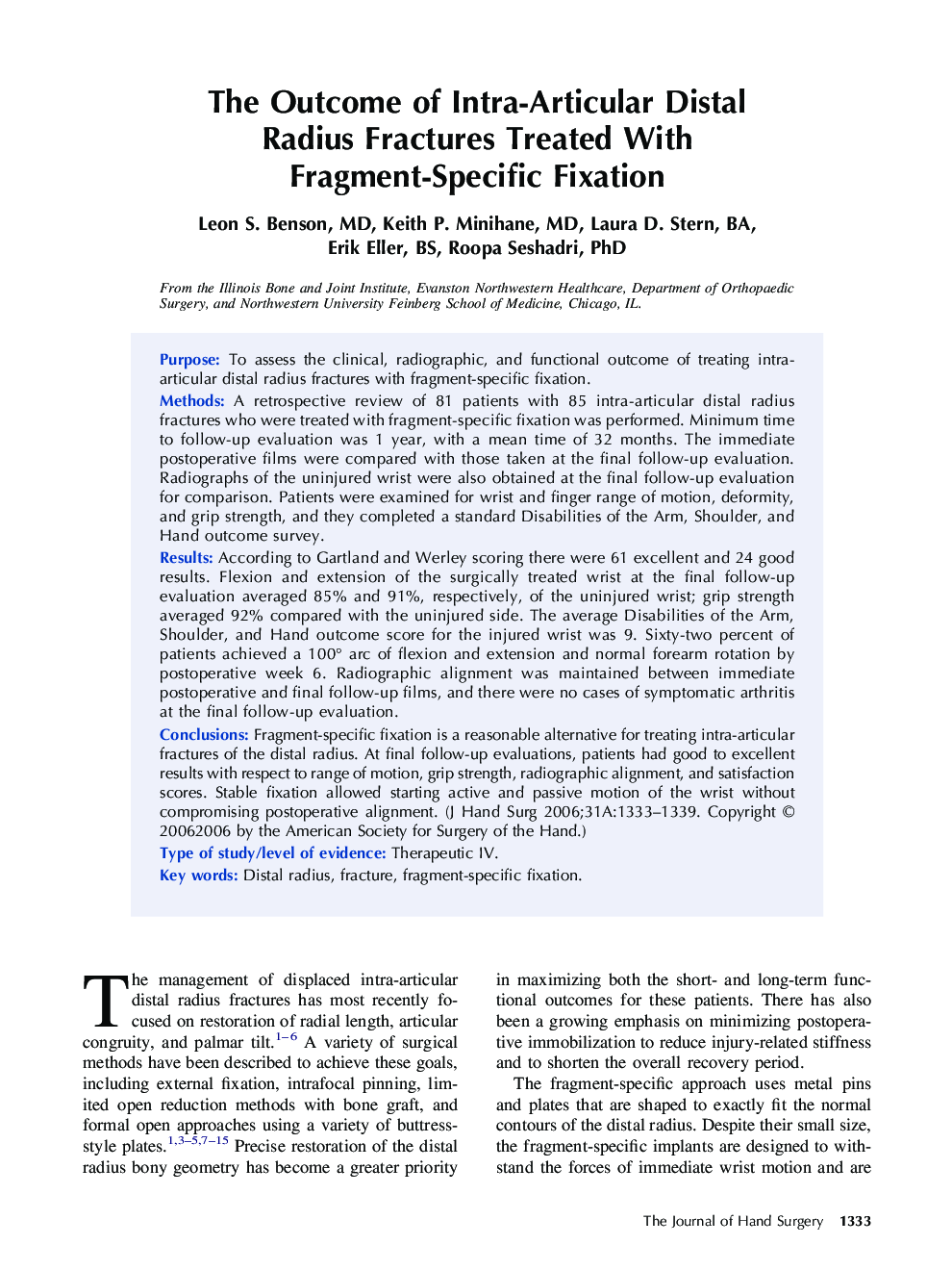| کد مقاله | کد نشریه | سال انتشار | مقاله انگلیسی | نسخه تمام متن |
|---|---|---|---|---|
| 4069347 | 1604460 | 2006 | 7 صفحه PDF | دانلود رایگان |

PurposeTo assess the clinical, radiographic, and functional outcome of treating intra-articular distal radius fractures with fragment-specific fixation.MethodsA retrospective review of 81 patients with 85 intra-articular distal radius fractures who were treated with fragment-specific fixation was performed. Minimum time to follow-up evaluation was 1 year, with a mean time of 32 months. The immediate postoperative films were compared with those taken at the final follow-up evaluation. Radiographs of the uninjured wrist were also obtained at the final follow-up evaluation for comparison. Patients were examined for wrist and finger range of motion, deformity, and grip strength, and they completed a standard Disabilities of the Arm, Shoulder, and Hand outcome survey.ResultsAccording to Gartland and Werley scoring there were 61 excellent and 24 good results. Flexion and extension of the surgically treated wrist at the final follow-up evaluation averaged 85% and 91%, respectively, of the uninjured wrist; grip strength averaged 92% compared with the uninjured side. The average Disabilities of the Arm, Shoulder, and Hand outcome score for the injured wrist was 9. Sixty-two percent of patients achieved a 100° arc of flexion and extension and normal forearm rotation by postoperative week 6. Radiographic alignment was maintained between immediate postoperative and final follow-up films, and there were no cases of symptomatic arthritis at the final follow-up evaluation.ConclusionsFragment-specific fixation is a reasonable alternative for treating intra-articular fractures of the distal radius. At final follow-up evaluations, patients had good to excellent results with respect to range of motion, grip strength, radiographic alignment, and satisfaction scores. Stable fixation allowed starting active and passive motion of the wrist without compromising postoperative alignment.Type of study/level of evidenceTherapeutic IV.
Journal: The Journal of Hand Surgery - Volume 31, Issue 8, October 2006, Pages 1333–1339